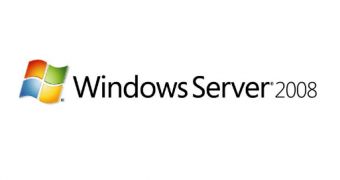February 4, 2008 is synonymous with the releasing to manufacturing of Windows Server 2008. The successor of Windows Server 2003 will be launched officially at the end of the month, on February 27, 2008, at the Heroes Happen Here event in Los Angeles, alongside Visual Studio 2008, which has already RTMed and SQL Server 2008 which is planned for RTM in the third quarter of 2008. During the development of the Windows Server 2008 operating system, Microsoft informed that in excess of 2 million beta and evaluation versions shipped to testers, customers and partners around the world.
"We came in super early & the finals sign offs for the release off this morning. Steve Ballmer gave a talk to the financial communities. Today is a fun day for us - not one that comes along every day. For me, I've done a load of releases but this is one of the few I've done where I wrote the original 'vision' document & actually follwed all the way through to release," revealed Iain McDonald, General Manager Windows Server Group.
With Windows Server 2008 having been released to manufacturing and on its track to world wide availability, one aspect of the transition to the new server platform concerns the upgrade paths from Windows Server 2003. But as far as the upgrade options are concerned, the Redmond company delivered some advices for customers. First off, the environment in which Windows Server 2003 has already been deployed is very important. In this regard, servers running Windows Server 2003 with applications such as Active Directory, Domain Name System (DNS) and Dynamic Host Configuration Protocol (DHCP), are excellent candidates for an upgrade.
"Microsoft recommends other customers running a wider variety of applications follow IT community best practices and perform a 'clean install' of Windows Server 2008. A clean install involves loading Windows Server 2008 on a partition that is not running an existing operating system. Microsoft advises those customers who want to pursue an upgrade to first contact the software manufacturer for prescriptive guidance. Customers running applications whose manufacturers do not provide support during the upgrade process, which did not ship with Windows Server 2003 or that weren't delivered to Windows Server via Windows Update should remove those applications first, perform the upgrade to Windows Server 2008, verify the applications are supported on Windows Server 2008 and then reinstall the applications," the company revealed.
With Windows Server 2008, the installation process has been streamlined via image-based deployment. The utilization of installation images is an added guarantee that the process is not only more efficient, but also less error-prone, in comparison to scripted deployments. Essentially, users of Windows Server 2003 Standard Edition (R2, SP1 or SP2) can perform a full installation of Windows Server 2008 Standard Edition or Enterprise Edition. From Windows Server 2003 Enterprise Edition (R2, SP1 or SP2) users can upgrade to a full installation of Windows Server 2008 Enterprise Edition. And from Windows Server 2003 Datacenter Edition (R2, SP1 or SP2), the obvious choice is a full installation of Windows Server 2008 Datacenter Edition.
"Windows Server 2008 also offers a barebones installation option called Server Core, in which only the services required to perform the Active Directory Domain Services, Active Directory Lightweight Directory Services (AD LDS), DHCP, DNS Server, File Services, Print Server, Streaming Media Services, Web Server (IIS), or Hyper-V (Virtualization), roles are installed. A Server Core installation offers base-level server functionality without any extra overhead, so it will typically require less maintenance and fewer updates than a full installation," Microsoft added.

 14 DAY TRIAL //
14 DAY TRIAL //